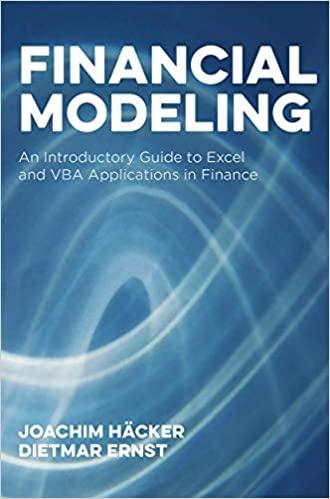Based on the information you have analyzed, explain which industry you would recommend has the greatest opportunity for growth, and why?







Following months of speculation and political turmoil, Alderland have formalised their split from Greater Colandia and will be forming a new Parliament in the city of Prosnia, which is expected to form the capital of this as an autonomous country. Whilst it initially appeared that hardliners in the Colandian Parliament would oppose this secession, the political conflict has been resolved relatively peacefully now. What remains to be seen is how Alderland will establish the trade agreements that will be so critical to maintaining and even growing their new, independent economy. UK World Business Markets Technology Politics New Tariffs for Alderland It is expected that in the short term, Alderland will mimic the current EU tariffs on goods exported to the remaining parts of Greater Colandia. Many sectors will have completely new systems of tariffs applied to their goods, which until this month, were freely distributed across the region. This will have a great impact on the $15.7 billion in annual exports from Alderland. The World Trade Organisation (WTO) tariffs are standard rates agreed between Colandia and the EU, US and Japan. These tariffs are applied reciprocally on all exports between Colandia and the major trading blocks. Tariffs for Key Alderlandian Products EU US 27 15 Beverages and tobacco Machinery and automotives Farm produce (meat, dairy) Farm products (e.g. grains, rice) Materials (e.g. wood, metal, glass) Fresh produce (e.g. vegetables, fruit) Chemical substances 19 20 16 37.4 0.9 11.3 1.9 China UK 10 23 27 15 24.5 25.1 1.2 12.1 15.2 12.9 2.1 0.5 7 15 10 23.9 13 23.9 0.7 Alderlandian Trade by Market (Percentage Split) Colandia EU US China UK Other Beverages and tobacco Machinery and automotives Farm produce (meat, dairy) Farm products (e.g. grains, rice) Materials (e.g. wood, metal, glass) Fresh produce (e.g. vegetables, fruit) Chemical substances 20.5 19.4 4.3 44.9 3.7 0 37.7 7.4 22.2 34.9 21.4 23.2 12.7 48.9 1.2 42.9 32.7 1 12.3 17.9 1 12.1 14.3 5.7 4.7 0 1 37.5 13.2 30.5 0 37.1 12.4 14.6 1.8 14 0 37.2 2 20.4 22.4 8.9 Main Alderlandian Exports Proportion of all Alderlandian Exports Beverages and tobacco 12% Machinery and automotives 2% Farm produce (meat, dairy) 17% Farm products (e.g.grains, rice) 16% Materials (e.g. wood, metal, glass) 4% Fresh produce (e.g. vegetables, fruit) 16% Chemical substances 23% Other 10% Following months of speculation and political turmoil, Alderland have formalised their split from Greater Colandia and will be forming a new Parliament in the city of Prosnia, which is expected to form the capital of this as an autonomous country. Whilst it initially appeared that hardliners in the Colandian Parliament would oppose this secession, the political conflict has been resolved relatively peacefully now. What remains to be seen is how Alderland will establish the trade agreements that will be so critical to maintaining and even growing their new, independent economy. UK World Business Markets Technology Politics New Tariffs for Alderland It is expected that in the short term, Alderland will mimic the current EU tariffs on goods exported to the remaining parts of Greater Colandia. Many sectors will have completely new systems of tariffs applied to their goods, which until this month, were freely distributed across the region. This will have a great impact on the $15.7 billion in annual exports from Alderland. The World Trade Organisation (WTO) tariffs are standard rates agreed between Colandia and the EU, US and Japan. These tariffs are applied reciprocally on all exports between Colandia and the major trading blocks. Tariffs for Key Alderlandian Products EU US 27 15 Beverages and tobacco Machinery and automotives Farm produce (meat, dairy) Farm products (e.g. grains, rice) Materials (e.g. wood, metal, glass) Fresh produce (e.g. vegetables, fruit) Chemical substances 19 20 16 37.4 0.9 11.3 1.9 China UK 10 23 27 15 24.5 25.1 1.2 12.1 15.2 12.9 2.1 0.5 7 15 10 23.9 13 23.9 0.7 Alderlandian Trade by Market (Percentage Split) Colandia EU US China UK Other Beverages and tobacco Machinery and automotives Farm produce (meat, dairy) Farm products (e.g. grains, rice) Materials (e.g. wood, metal, glass) Fresh produce (e.g. vegetables, fruit) Chemical substances 20.5 19.4 4.3 44.9 3.7 0 37.7 7.4 22.2 34.9 21.4 23.2 12.7 48.9 1.2 42.9 32.7 1 12.3 17.9 1 12.1 14.3 5.7 4.7 0 1 37.5 13.2 30.5 0 37.1 12.4 14.6 1.8 14 0 37.2 2 20.4 22.4 8.9 Main Alderlandian Exports Proportion of all Alderlandian Exports Beverages and tobacco 12% Machinery and automotives 2% Farm produce (meat, dairy) 17% Farm products (e.g.grains, rice) 16% Materials (e.g. wood, metal, glass) 4% Fresh produce (e.g. vegetables, fruit) 16% Chemical substances 23% Other 10%













